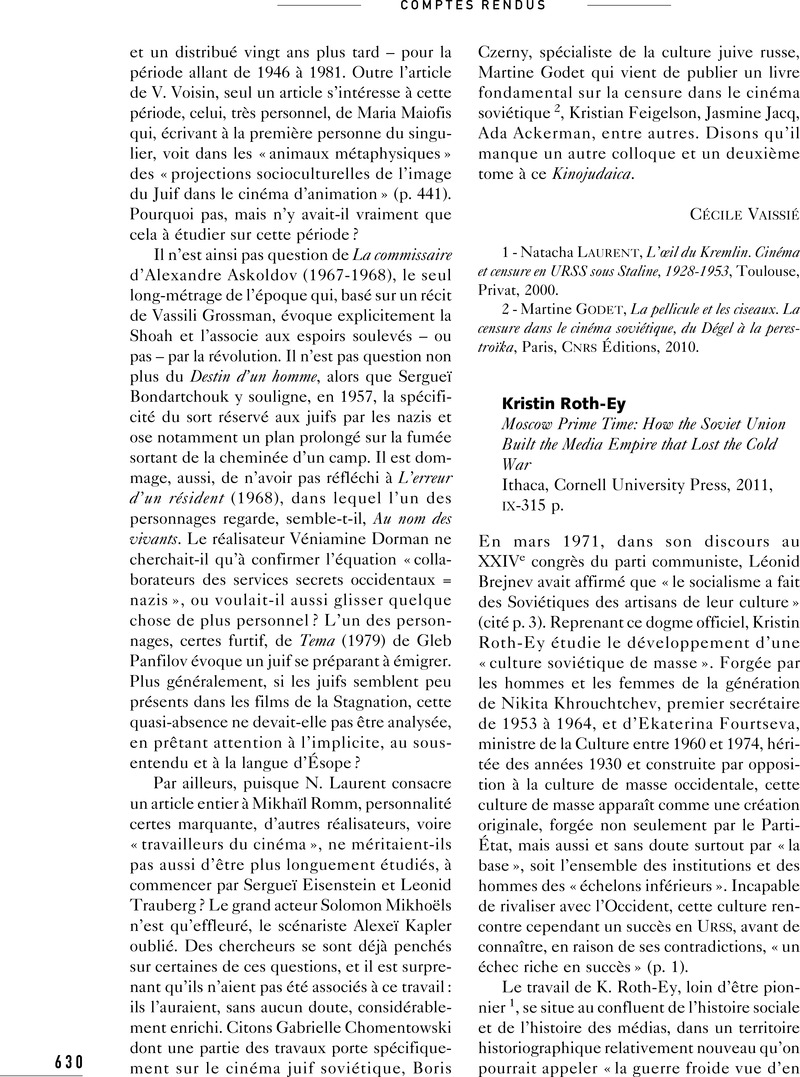Article contents
Kristin Roth-Ey. Moscow Prime Time: How the Soviet Union Built the Media Empire that Lost the Cold War. Ithaca, Cornell University Press, 2011, IX-315 p.
Published online by Cambridge University Press: 20 January 2017
Abstract

- Type
- Communisme (comptes rendus)
- Information
- Copyright
- Copyright © Les Éditions de l’EHESS 2013
References
1- Stites, Richard, Russian Popular Culture: Entertainment and Society Since 1900, Cambridge, Cambridge University Press, 1992 Google Scholar ; Kozovoi, Andreï, Par-delà le mur. La culture de guerre froide soviétique entre deux détentes, Paris, Éd. Complexe, 2009.Google Scholar
2- Sur cette notion, voir Brooks, Jeffrey, Thank you, Comrade Stalin! Soviet Public Culture from Revolution to Cold War, Princeton, Princeton University Press, 2000.Google Scholar
3- Voir, par exemple, Woll, Josephine, Real Images: Soviet Cinema and the Thaw, New York, I. B. Tauris, 2000.Google Scholar
4- Vichnevski, Anatoli, La faucille et le rouble. La modernisation conservatrice en URSS, Paris, Gallimard, 2000.Google Scholar
5- Youngblood, Denise J., Movies for the Masses: Popular Cinema and Soviet Society in the 1920s, Cambridge, Cambridge University Press, 1993.Google Scholar
- 1
- Cited by




